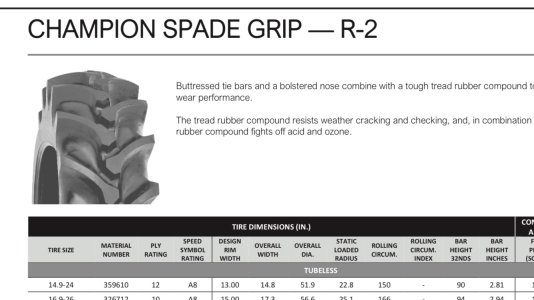chevytaHOE5674
Well-known member
There is an industry accepted dimension for an 18.4-30 tire with a +/- tolerance allowed. If there wasn't one manufacture could make an 18.4-30 tire that's 40" tall and another could be 72" tall. That is NOT how it works.
That same +/- tolerance also applies to metric size tractor tires. I have 3 tractors here with different brand 520/85r38s on them and spec for all 3 brands is within 1.5" in height. I also have 3 tractors with 20.8r38s of various brands and there is 1.3" in height variation between them.
If what you believe was true all 3 of my metric tires should spec the same height.... but they don't.
That same +/- tolerance also applies to metric size tractor tires. I have 3 tractors here with different brand 520/85r38s on them and spec for all 3 brands is within 1.5" in height. I also have 3 tractors with 20.8r38s of various brands and there is 1.3" in height variation between them.
If what you believe was true all 3 of my metric tires should spec the same height.... but they don't.



